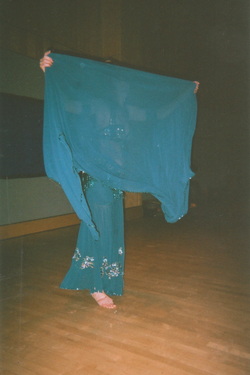
It is not surprising that symbols are found in Middle Eastern dance. In future articles, I will be covering a few of the more important symbols in depth. In the meantime, here are a few of the most popular found in belly dance:
The Belly: Like the hillside, the naval of the earth, the whole body rotates around it.
Long Hair: To the Bedouin nomads, the seat of the soul.
Isolations and Contractions: Like those used in labor and childbirth. They celebrate women’s power to give life. The abdominal muscles and thighs are integral in childbirth. An earth dance.
Bare Feet: To be at one with and grounded with the earth.
The Drum: Like the heartbeat. Life itself.
The Veil: Mystery. Modesty. Used to keep desert sand away from one’s face and body.
Coins in Costuming: Poor girls in Greece danced for their dowry and sewed coins to a scarf at their hips. A “saving’s account.” A “dowry dancer.”
Tassels: Found as part of the tack used on camels as they traverse the desert. Colorful.
The Snake: In Egypt, the symbol of immortality. In Roman and Victorian times a sign of good luck. The sinuous movements of the cobra are an integral part of belly dance.
The Camel: The undulations created when riding a camel are emulated often in belly dance.
Canes/Sticks: Were used by warriors to prepare for battle. Women watching incorporated them into their dance.
Swords: The same as for canes/sticks.
 RSS Feed
RSS Feed